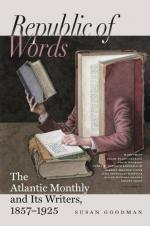On the breaking out of the Rebellion of 1745, the young divinity-student, having returned to Edinburgh, joined the Volunteers, and entered warmly into all the bustle and business of those exciting days. In the Battle of Prestonpans he took part, and was active to the end. When Prince Charles Edward issued a proclamation of pardon to the Volunteers, Carlyle went down to the Abbey Court to see him. The Prince mounted his horse, while the young man stood by, and rode away to the east side of Arthur’s Seat. Charles was at that time a good-looking gentleman, of about five feet ten inches, with dark red hair and black eyes.
One Monday morning in October, a hundred and fifteen years ago, young Carlyle set out for Rotterdam, on his way to Leyden, to join the British students there. Among them he found Charles Townshend and John Wilkes, names afterwards famous in English politics. With Wilkes he became intimate, and many a spirited talk they had together in their daily rambles.
But we cannot dwell upon the incidents of Carlyle’s student-life on the Continent. Soon after his return to Scotland he made acquaintance with Smollett, whose lively, agreeable manners rendered him universally popular. Thomson, the author of “The Seasons,” and Armstrong the poet, were also at this time among his friends. In 1746 he preached his first sermon before the Presbytery of Haddington, and got “universal approbation,” especially from one young lady, to whom he had been long attached. Robertson the historian and Home the dramatist were now among his neighbors, and no doubt used their influence in getting the young clergyman a living. He finally settled at Inveresk, where his life was a very pleasant round of cares and duties. Hume, Adam Smith, Blair,




